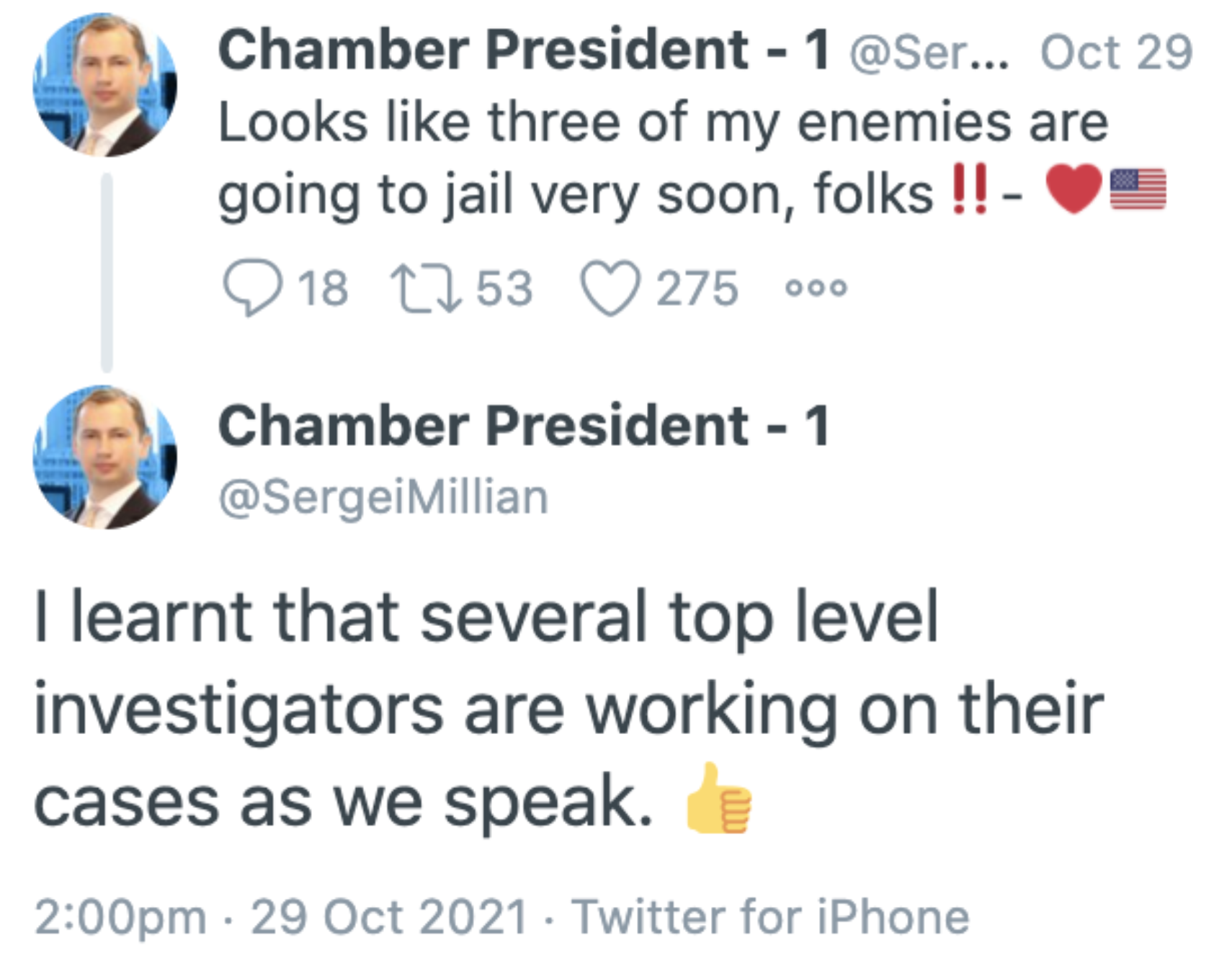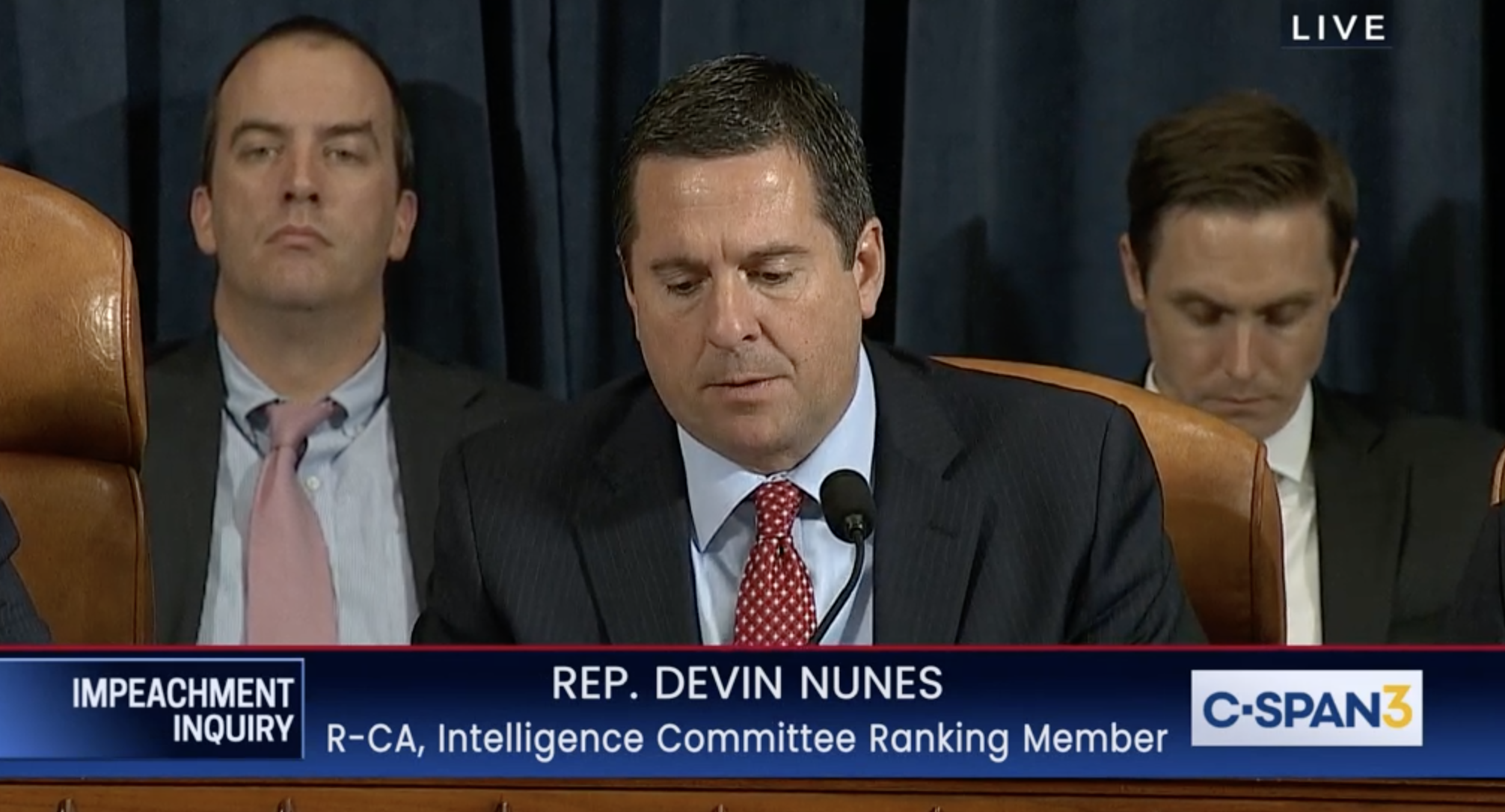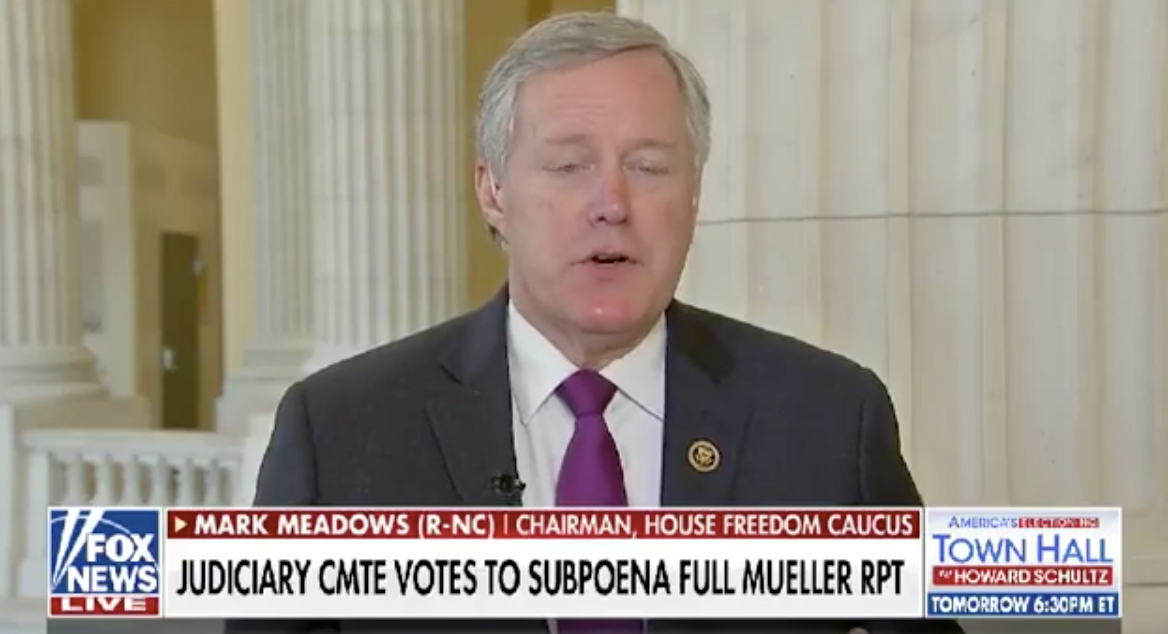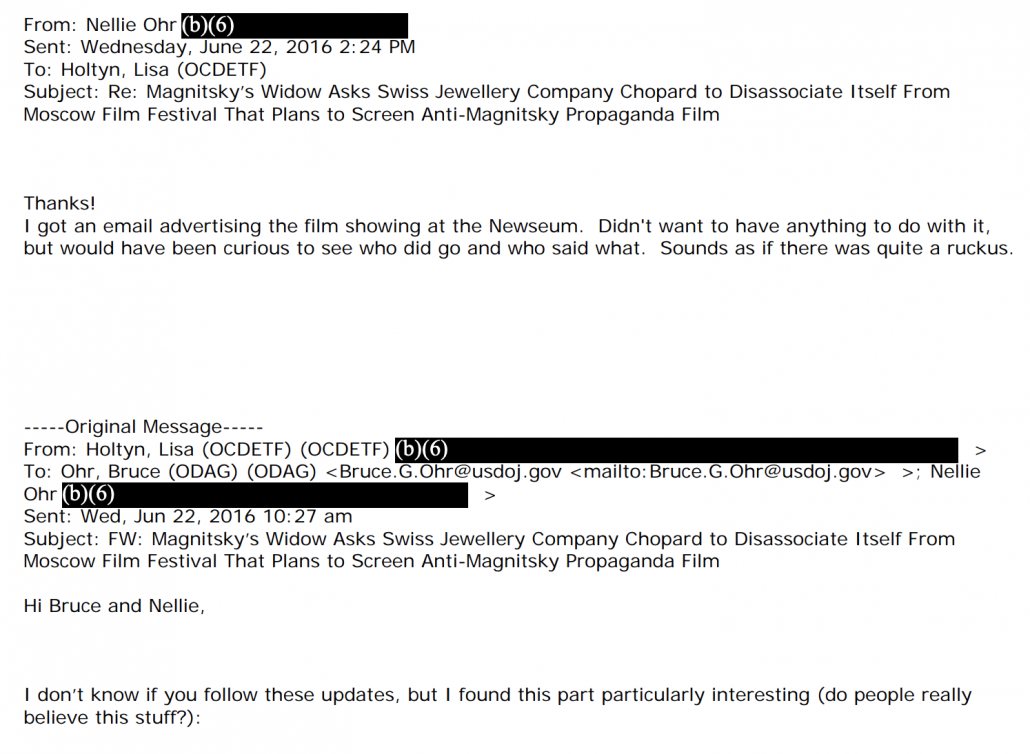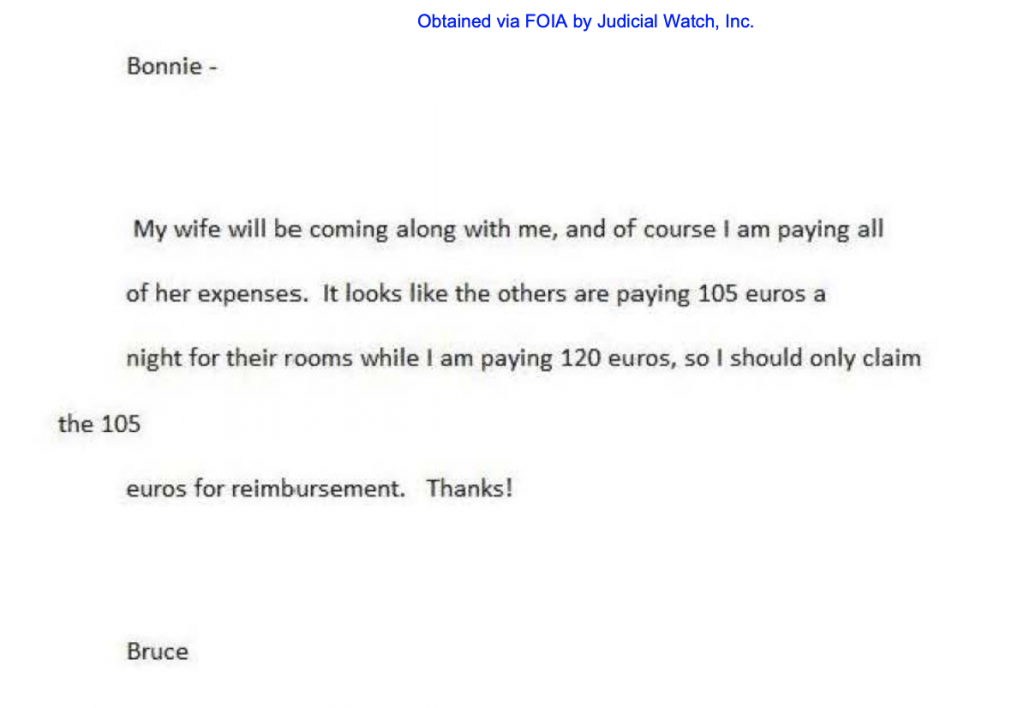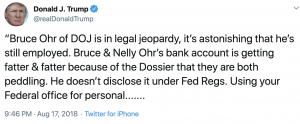John Durham Committed the “Crime” of “Inferring” of Which He Accused Rodney Joffe
I’d like to look at 13 instances in which the word, “inference” appears in the Durham Report.
Almost half come in Durham’s discussion of Rodney Joffe’s work on the Alfa Bank anomalies. Durham states as fact that Joffe “tasked” a number of people to “mine … data to establish ‘an inference’ … tying then-candidate Trump to Russia.”
With respect to the Alfa Bank materials, our investigation established that Joffe had tasked a number of computer technology researchers who worked for companies he was affiliated with, and who had access to certain internet records, to mine the internet data to establish “an inference” and “narrative” tying then-candidate Trump to Russia.
[snip]
In particular, in late July and early August, Joffe commenced a project in coordination with Sussmann and Perkins Coie to support an “inference” and “narrative” tying Trump to Russia. For example, records show that on three days in August 2016, Joffe had meetings or conference calls with Sussmann and Elias. 1401 At about the same time, Joffe began tasking his own employees and associates to mine and assemble internet data that would support such an inference or narrative. 1402
[snip]
Regarding this whole project, my opinion is that from DNS all we could gain even in the best case is an *inference*. I have not the slightest doubt that illegal money and relationships exist between pro-Russian and pro-Trump, meaning actual people very close to Trump if not himself, [meaning actual people very close to Trump if not himself. And by Putin’s traditional style, people Putin controls, but not himself. He controls the oligarchs and they control massive fortunes and cross nearly all major industries in a vast number of countries.]
But even if we found what Rodney asks us to find in DNS we don’t see the money flow, and we don’t see the content of some message saying “send me the money here” etc.
I could fill out a sales form on two websites, faking the other company’s email address in each form, and cause them to appear to communicate with each other in DNS (And other ways I can think of and I feel sure [University-1 Researcher-2] can think of[.])
IF Rodney can take the *inference* we gain through this team exercise … and cause someone to apply more use.fit! tools of more useful observation or study or questioning … then work to develop even an inference may be worthwhile.
That is how I understood the task. Because Rodney didn’t tell me more context or specific things. What [Cyber Researcher- 1] has been digging up is going to wind up being significant. It’s just not the case that you can rest assured that Hil[l]ary’s opposition research and whatever professional govts and investigative journalists are also digging … they just don’t all come up with the same things or interpret them the same way. But if you find any benefit in what [he] has done or is doing, you need to say so, to encourage [him]. Because we are both killing ourselves here, every day for weeks.
[I’m on the verge of something interesting with hosts that talk to the list of Trump dirty advisor domain resources, and hosts that talk to [Russian Bank1]-* domains. Take even my start on this and you have Tehran and a set of Russian banks they talk to. I absolutely do not assume that money is passing thru Tehran to Trump. It’s just one of many *inferences* I’m looking at.
SAME IRANIAN IP THAT TALKS TO SOME TRUMP ADVISORS, also talks to:
[list of domains redacted]
(Capitals don’t mean SUPER SIGNIFICANT it was just a heading.)
Many of the IPs we have to work with are quite MIXED in purpose, meaning that a lot of work is needed to WINNOW down and then you will still only be left in most cases with an *inference* not a certainty.]
Trump/ advisor domains I’ve been using. These include ALL from Rodney’s PDF [the Trump Associates List] plus more from [Cyber Researcher-1]‘s work[:
Trump/ advisor domains I’ve been using. These include ALL from [Tech Executive-1’s] PDF [the Trump Associate’s List] plus more from [name redacted, probably also Cyber Researcher-1]’s work: [list of domains redacted] [RUSSIAN BANK-1] DOMAINS [list of domains redacted] More needs to be added to both lists.]1438
The word “inference” here comes not from Joffe, but from April Lorenzen, who wrote the large block quote here, to which I’ve added — in the italicized brackets — language from the Durham motion to get it admitted at trial. Even without the Lorenzen language Durham excludes, his deceit is clear, because someone that Durham has never included in his feverish conspiracy theories — Cyber Researcher-1 — is described as doing his or her own work. With Lorenzen’s language included, Durham’s deceit is still more obvious, given how Lorenzen talks about forming her own inference. Not to mention the fact that (as I noted here), many of Lorenzen’s inferences — starting with the fact that Trump’s campaign manager was laundering money from Russia through Cyprus and that he had a tie with Alfa Bank founder’s son-in-law or that Trump was hiding business ties with Russia — turned out to be 100% correct.
But Durham’s deceit goes even further, because the effort to review DNS data for signs of Russian hacking started, organically, in June, not in July in response to Joffe.
Durham’s misrepresentation of the relationship between the various researchers is particularly rich given that a technical review he had done months after indicting Sussmann revealed that the data Sussmann shared with the FBI was referred to as Lorenzen’s data, not Joffe’s.
The 851 records of resolutions on the USB drive were an exact match for a file of resolutions sent from University-1 Researcher-2 to University-I Researcher- 1 on July 29, 2016, which was referred to as “[first name of Tech Company-2 Executive-l]’s data.”
As it happens, three more of the appearances of the word “inference” in the Durham Report come from the technical review.
The FBI DNS experts with whom we worked also identified certain data and information that cast doubt upon several assertions, inferences, and allegations contained in (i) the above-quoted white papers about the Yotaphone allegations, and (ii) the presentation and Yotaphone-related materials that Sussmann provided to the CIA in 2017.
[snip]
Data files obtained from Tech Company-I, Tech Company-2, and University-I reflect that Yotaphone-related lookups involving IP addresses assigned to the EOP began long before November or December 2016 and therefore seriously undermine the inference set forth in the white paper that such lookups likely reflected the presence of a Trump transition-team member who was using a Yotaphone in the EOP.
[snip]
In sum, as a result of our investigation, the FBI experts advised us that actual data and information on YotaPhone resolution requests directly undermined or refuted several conclusions and inferences included in the Yotaphone white paper. 1674
But that technical review only treats claims made about Yotaphone, not the Alfa Bank allegations, as “inferences.”
I’ll return to the way that Durham presents this technical review at some later time. It doesn’t help Durham in the way he thinks it does.
The point being, though, is that Durham claimed that Joffe was directing people to make inferences about Alfa Bank. He investigated private citizens who made such inferences as a crime.
Which is why I find it telling that the remaining three uses of the word “inference” in the Durham report are his own.
For example, Durham infers, first, that Sussmann’s statements that he was not at the FBI or CIA on behalf of any client is proof he was hiding who his client(s) were, and from that inference, he in turn infers that Sussmann was deliberately trying to hide Clinton and Joffe.
Accordingly, Sussmann’s conduct supports the inference that his representations to both the FBI and the CIA that he was not there on behalf of a client reflect attempts to conceal the role of certain clients, namely the Clinton campaign and Joffe, in Sussmann’s work. Such evidence also further supports the inference that Sussmann’s false statements to two different agencies were not a mistake or misunderstanding but, rather, a deliberate effort to conceal the involvement of specific clients in his delivery of data and documents to the FBI and CIA.
Both these inferences are nonsense — not least because Clinton no longer was a client of Sussmann’s when he went to the CIA in 2017 and both in the process of setting up the CIA meeting and helping the FBI to kill the NYT Alfa Bank story, Sussmann revealed that he did have a client he was working with.
Durham simply refuses to consider the possibility that DNS experts can see anomalous traffic and view it with alarm. And he grossly misrepresents the evidence regarding whether Sussmann pushed the Alfa Bank story after helping the FBI to kill it, probably because that evidence strongly supports Sussmann’s claimed motive: to give the FBI a chance to investigate before the public story alerted those behind the anomaly.
The final use of the word inference in the report is even more egregious.
As discussed above, Fusion GPS approached Steele in May 2016. Prior to his retention, Glenn Simpson met with Steele at Heathrow Airport in London and pitched Steele on the opposition research project. 1100 Approximately one week later, Danchenko contacted RIA Novosti journalists seeking Millian’s contact information. 1101 The timing of Danchenko’s request to RIA Novosti on the heels of Steele’s meeting with Simpson in London strongly supports the inference that Fusion GPS directed Steele to pursue Millian. 1102 Indeed, by the time of Steele’s meeting with Simpson, Nellie Ohr had already identified Millian’s alleged connections to Trump.
As with Carter Page (and Felix Sater, the focus on whom Durham continually downplayed over the course of this investigation), it didn’t take a research firm to identify Millian’s ties to Trump. Especially not with Millian bragging of those ties. Indeed, elsewhere Durham suggests Ohr learned of Millian from the RIA Novosti interviews he did in April. RIA Novosti was just as accessible to Danchenko as it was to Ohr.
But once you’ve traced the interest in Millian back to a Nellie Ohr report completed on April 22, 2016, then you’re tracking the research started no later than November 2015 under Paul Singer. You’re blaming Hillary for a project she took over from a right wing billionaire. You’re also tracking research that turned out to be reliable and accurate.
Again, these kinds of inferences are the stuff that Durham tried to criminalize when Lorenzen, a private citizen, made them.
But he nevertheless included them in a declination report provided to the Attorney General.

